As technology continues to revolutionize manufacturing, traditional methods of production are being replaced by more advanced techniques. And one such innovation is CNC machining.
CNC or Computer Numerical Control is the use of computer software to control the operation of machines that create parts. And CNC parts are those components created through this process. But what are CNC parts, and why are they so essential to modern manufacturing?
In this informative and persuasive article, we’ll explore everything you need to know about CNC parts online , including their history, types, benefits, and applications. By the end of this guide, you’ll have a better understanding of CNC parts, their role in modern manufacturing, and why they’re a game-changer.
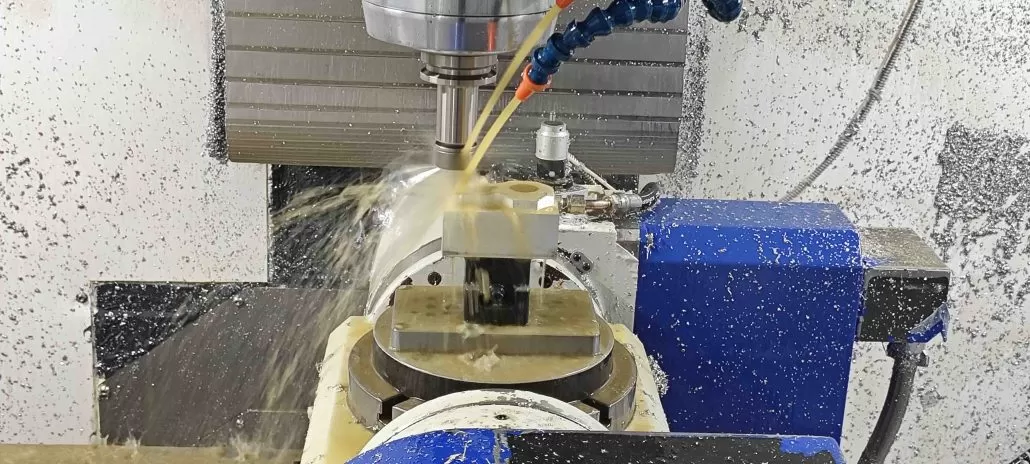
Understanding CNC Parts: Historical Context
To appreciate CNC parts, it’s essential to know their history. CNC machining traces its roots to the 1940s when John Parsons, a US Air Force Officer, and mathematician, developed a system of controlling machine tools using punched tapes. The technology was soon adopted by the aerospace and automotive industries, and by the 1960s, CNC machines were widespread.
However, it wasn’t until the 1980s that the use of computers in CNC machines became common, thanks to advances in microprocessing technology. With the advent of computers, CNC machines could now be programmed using software to create more complex parts and designs with greater precision and efficiency.
The Basics of CNC Parts
CNC machines have revolutionized the manufacturing industry. They enable manufacturers to produce high-quality and precise products in large quantities. One of the essential components of a CNC machine is the CNC parts.
What are CNC Parts?
CNC Parts are industrial components that are machined with Computer Numerical Control (CNC) technology. CNC technology employs programmed software to control and automate the movements of machinery tools such as lathes, mills, routers, or grinders. These machines use the computer-aided design (CAD) model of a part to precisely cut, drill, shape, or carve it out of blocks of raw material.
CNC Parts can be made of various materials such as metals, plastics, wood, or composites, and can come in all shapes and sizes depending on their applications. They can range from small intricate objects, such as medical implants or electronic components, to large complex structures, such as aircraft parts or automotive frames.
How do CNC Parts work?
CNC Parts work by following a set of precise instructions that tell the machines which tools to use, at what speed, and in what direction. The instructions are fed into the machine through a digital file that contains the CAD model of the part being machined. The machine then translates the file into machine language or G-code, which it uses to perform the machining operations.
CNC Parts can be machined using a variety of cutting tools such as drills, mills, lathes, and routers. The machines can also be equipped with various sensors and feedback systems that monitor the machining process and adjust the tool movements in real-time to ensure accuracy and precision.
Types of CNC Parts
There are various types of CNC parts used in modern manufacturing, including:
CNC Machine Parts: These are parts used in CNC machines, such as spindles, ball screws, linear guides, and hydraulic and pneumatic systems.
CNC Punch & Shear Parts: These parts are used in machines that punch and cut materials, such as sheet metal, cardboard, and plastic.
CNC Plasma and Laser Cutting Parts: These are components used in machines that cut sheet metal using plasma or laser technology.
CNC Milling and Turning Parts: These are the most common types of CNC parts and include components used in milling and turning machines such as motors, gears, and shafts.
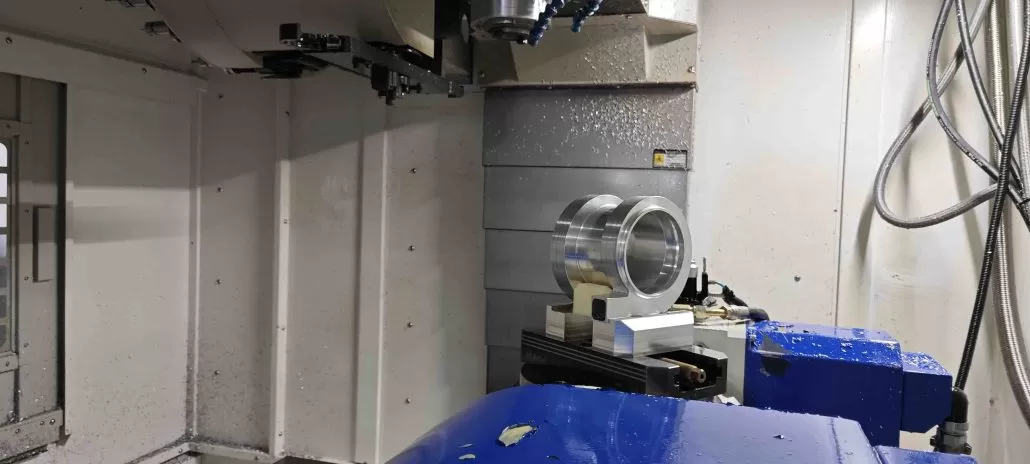
Benefits of Using CNC Parts
Using CNC parts in manufacturing has several benefits, including:
- Precision: CNC machines can create parts with extreme precision, ensuring consistency and accuracy in every piece produced.
- Efficiency: CNC machines are highly automated, making them faster and more efficient than traditional machines, which rely heavily on human operators.
- Versatility: CNC machines can produce a wide range of parts in various shapes and sizes, making them ideal for various manufacturing processes.
- Flexibility: With CNC machines, it’s possible to make changes to the design or program of a part quickly and easily, without having to overhaul the entire machine setup.
CNC parts are an essential component of modern manufacturing, offering unmatched precision, efficiency, and versatility in a wide range of applications.
Advantages of CNC Parts for Manufacturers
In the manufacturing industry, automation has become the norm. With the emergence of computer numerical control (CNC), manufacturers have been given more flexibility, precision, and accuracy in their operations. CNC has transformed the way manufacturers produce parts, and it has become an indispensable tool for manufacturers.
Flexibility
One of the greatest advantages of using CNC parts is the flexibility it offers manufacturers. Unlike traditional manufacturing methods, where every part must be created from scratch, CNC machines can produce a wide variety of parts with ease. This means that manufacturers can quickly adapt to changes in demand without having to retool their equipment. The flexibility of CNC parts also allows manufacturers to produce parts with multiple configurations, ensuring that they can meet the demands of different customers.
Precision
CNC machines are known for their precision and accuracy. They can create parts with tolerances of less than 0.001 inches, which is impossible with traditional manufacturing methods. This level of precision is crucial for industries that require parts that fit together perfectly, such as aerospace, automotive, and medical device manufacturing. Precision also ensures that parts are manufactured consistently, reducing the chance of errors and defects.
Cost-effective
CNC machines are significantly more cost-effective than traditional manufacturing methods. They require less labor, and the machines can run 24/7 without any human intervention. This means that manufacturers can produce parts at a much lower cost, reducing the overall cost of production. Additionally, CNC machines are highly efficient and can produce parts with minimal waste, reducing material costs.
Fast turnaround
One of the most significant advantages of CNC parts is the fast turnaround time. Traditional manufacturing methods can take weeks or even months to produce parts. With CNC machines, manufacturers can produce parts in a matter of hours or days. This faster production time means that manufacturers can quickly respond to changes in demand and bring products to market faster.
Improved quality
CNC machines enable manufacturers to produce parts with improved quality. With precision and accuracy, parts can be manufactured more consistently, reducing the likelihood of defects. Additionally, CNC machines are capable of performing complex operations, such as drilling, threading, and milling, which can be difficult to achieve with traditional manufacturing methods.
In conclusion, CNC parts offer manufacturers numerous advantages, including flexibility, precision, cost-effectiveness, fast turnaround, and improved quality. As the manufacturing industry continues to evolve, CNC machines will undoubtedly become even more essential to manufacturers. If you’re a manufacturer looking to stay ahead of the curve, consider investing in CNC machines to produce high-quality, cost-effective parts.
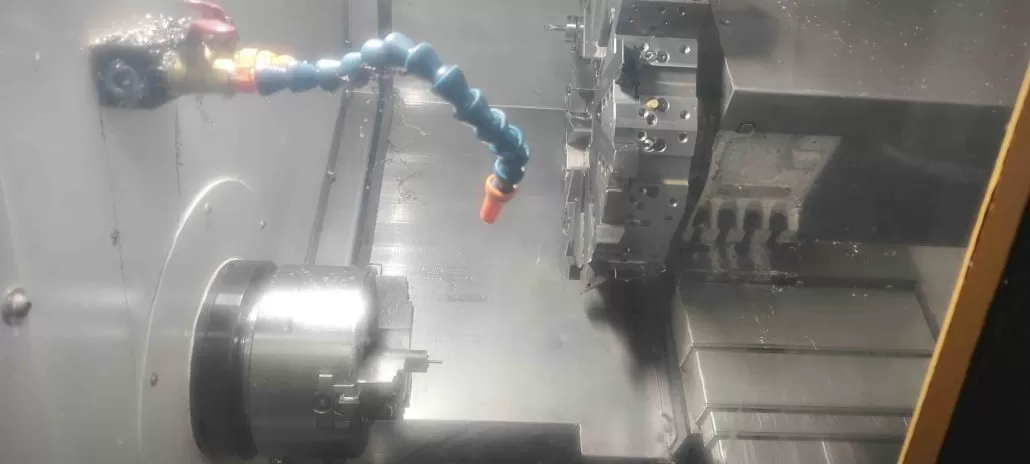
Applications of CNC Parts
CNC (Computer Numerical Control) machining has revolutionized the manufacturing industry by providing high-precision parts with greater design flexibility and automation. Modern machining processes have come a long way from the traditional methods that relied heavily on human intervention, and the use of CNC parts has taken this to the next level. Let’s dive into the world of CNC parts and their applications in various industries.
Automotive Industry
The automotive industry has always been at the forefront of adopting new technologies in manufacturing, and CNC parts are no exception. From engine components, suspension systems, transmission parts, and intricate fuel injection systems, CNC machining has enabled the industry to deliver high-quality products with superior accuracy and speed. CNC machines can handle complex designs, tight tolerances, and high-volume production runs, making it possible to produce parts at a much faster rate with top-notch quality.
Aerospace Industry
The aerospace industry demands extremely high precision and accuracy when it comes to machining aircraft parts. CNC parts have transformed the aerospace industry by providing accurate and repeatable machining of complex geometries found in both aircraft interiors and exteriors. Advanced CNC machining enables manufacturers to produce lightweight components for planes, reducing fuel consumption and improving overall performance.
Medical Industry
The medical industry requires precision parts for life-supporting devices, prosthetics, and surgical instruments. CNC machining provides a level of accuracy and consistency that is critical in medical manufacturing. CNC parts are also produced in materials that are compatible with the medical industry standards, such as titanium alloys and stainless steel.
Robotics Industry
The robotics industry has seen remarkable growth in recent years due to the increasing demand for automation in various industries. CNC parts are the backbone of robotic manufacturing, providing precise and durable components such as gears, bearings, and drive wheels. CNC parts allow manufacturers to create customized and intricate designs for robotics systems, enabling them to operate more efficiently and effectively.
CNC parts are revolutionizing the manufacturing industry by providing high-precision options with greater design flexibility and automation. The automotive industry, aerospace industry, medical industry, and robotics industry all benefit from the capabilities of CNC machining. With quality and efficiency at the forefront of modern manufacturing, the applications of CNC parts will only continue to increase in the future. As a result, it is essential for manufacturers to embrace this technology and propel their businesses into the next level of manufacturing.
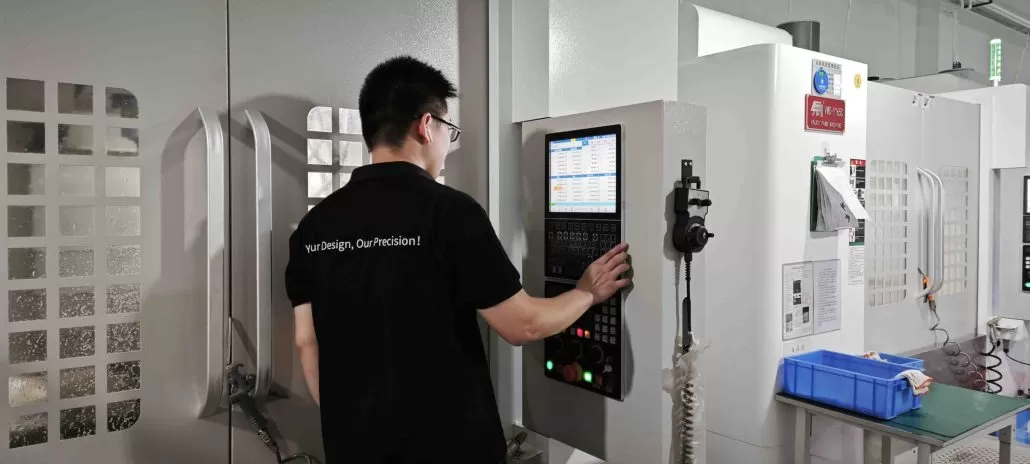
CNC Part Material Selection
Are you looking to create a CNC machined component for your next project? If so, one of the critical decisions you’ll need to make is choosing the right material for your part. With numerous materials available, selecting the appropriate one could make a significant impact on the final product’s quality, functionality, and durability. Thus, it’s crucial to consider several factors before deciding on the material to use in your CNC part.
Understanding Material Properties
Before diving into the selection procedure, it’s vital to understand different material properties. Essentially, the material you choose will always impact your component’s mechanical, physical, chemical, and thermal properties, and overall performance. For example, materials with high strength and hardness are ideal for components that require increased durability.
Here are the basic material properties to know when selecting a material:
- Tensile Strength: This property is the maximum stress a material can withstand before breaking.
- Yield Strength: The stress level where a material will deform before breaking.
- Hardness: The material’s ability to resist permanent deformation under compression.
- Toughness: The ability of a material to resist fracture when subjected to load combinations.
- Elastic Modulus: The material’s ratio of the stress developed to strain produced.
- Ductility: The extent to which a material can be deformed without cracking.
- Creep: The rate of deformation due to stress, especially at high temperatures.
- Fatigue Strength: The ability of a material to withstand loads when subjected to cyclic stresses.
Your Project’s Unique Requirements
After understanding material properties, it’s crucial to take the unique requirements of your project into account when selecting a CNC material. These requirements will vary depending on the application, the final product’s intended use, and the overall design.
Here are some criteria to consider when selecting materials for CNC parts:
- Strength: Is the component expected to bear heavy loads?
- Heat resistance: Will the part be exposed to high temperatures?
- Corrosion Resistance: Is the environment where the component operates abrasive or corrosive?
- Cost: Does the budget allow for expensive material selection?
- Surface finish: Is the final product intended for decorative functions?
- Weight: Does the part’s weight play a crucial role in the assembly?
- Electrical Conductivity: Does the component need to conduct electricity?
- Machinability: How easy is it to machine the chosen material? Is it easy to get a consistent surface finish or achieve tight tolerances?
Some common materials used in CNC machining parts include Acrylics, ABS (Acrylonitrile Butadiene Styrene), Delrin, Aluminum, and Steel, among others. However, the final choice will depend on a range of factors as highlighted above.
In summary, selecting the right material for your CNC machined component is crucial for achieving excellent quality, durability, and functionality. Understanding material properties and unique project requirements is vital when making a material selection. With the right knowledge and guidance, you can make an informed decision and select the perfect CNC material for your next project. So, go ahead, evaluate your application requirements, and make an informed decision.
How to Design CNC Parts
If you’re searching for a way to fabricate parts with precision, accuracy, and efficiency, CNC (Computer Numerical Control) machining is the ultimate manufacturing process. While CNC machining has transformed the manufacturing industry, choosing the wrong design can lead to poor quality or even parts failure. Therefore, it’s essential to understand how to design CNC parts accurately.
CNC machines can work on a range of materials, including plastics, metals, wood, and more. The process can produce high-quality parts with tolerances as low as 0.0001 inches, making it a preferred manufacturing method for a wide range of industries.
Design for Manufacturability
Design for Manufacturability (DFM) is a crucial step in designing parts for CNC machining. DFM is the process of designing parts that can be easily and cost-effectively manufactured.
DFM helps identify flaws in the design that can lead to parts failure, high manufacturing costs, and missed deadlines. DFM also identifies design elements that can significantly impact the final product’s quality and strength.
DFM includes several principles that help designers design parts for CNC machines. These principles include:
- Avoid overcomplicating the design
- Minimize unnecessary features
- Ensure parts have clean and simple geometry
- Use proper tolerances
- Use standardized parts
Select the Right Materials
When selecting materials for your design, there are several factors to consider, such as the desired machining accuracy, strength requirements, and environmental conditions. Materials suitable for CNC machining include:
1.Metals (aluminum, titanium, stainless steel, copper, brass)
2.Plastics (ABS, acrylic, polycarbonate, nylon, PEEK)
3.Wood
4.Composites
Choosing the right material involves considering its properties and how it will react to the machining process.
Design with Tolerance in Mind
When designing parts for CNC machining, it’s essential to consider the tolerances required for each design element. Tolerance refers to the range of acceptable deviations from the correct dimension, expressed in thousandths of an inch.
It is essential to consider the machinability of the material when designing parts with narrow tolerances. Tight tolerance parts require high precision machines and specialized tools, which may increase manufacturing costs.

Design for Assembly
When designing parts for CNC machining, it’s crucial to consider the assembly process. Designing parts that can be easily assembled will help reduce manufacturing costs and time. Here are some tips:
- Designing parts with snap fits and interlocking features
- Avoiding complex geometric designs that require multiple machining processes
- Ensure parts have enough clearance for assembly.
Optimize Your Design for CNC Machining
After designing your parts, you should optimize them for CNC machining by following these tips:
1.Simplify the design as much as possible
2.Design parts with minimal machining processes
3.Use standard cutting tools
Work with the CNC machine operator to optimize the machine settings
Designing parts for CNC machining is a complex process that requires careful consideration of various factors. By following the guidelines outlined in this article, you can design parts that are efficient, cost-effective, and meet the required standards.
Designing parts for CNC machining involves various considerations, such as selecting the right materials, designing with tolerances in mind, designing for manufacturability, designing for assembly, and optimizing designs for CNC machining. By adopting these practices, you can save time, money, and reduce the risk of defects or failures in the final product.
CNC Parts Machining Cost: How to Get the Best Value for Your Money
When it comes to manufacturing complex and accurate parts, CNC (Computer Numerical Control) machining is a popular choice for its precision and speed. However, as a business owner or engineer, you are likely concerned about the cost of CNC parts machining. In this informative and persuasive article, we will explore the factors that affect CNC machining costs and how to get the best value for your money.
Factors affecting CNC parts machining cost
1.Material
The material used to manufacture the part has a significant impact on the CNC machining cost. Some materials, such as copper and titanium, are more expensive than others like aluminum or steel. The cost of the material will have a direct impact on the final price of the part.
2.Design complexity
The more complex the part design, the longer it will take to machine it. The longer the machining time, the higher the cost. The design of the part should be optimized for cost and manufacturability. Simple and straightforward designs are much cheaper to manufacture compared to complex and intricate designs.
3.Machine setup time
The time required to set up the CNC machine and the number of tool changes involved in making the part affect the machining cost. Once the setup is completed, larger quantities of parts can be produced faster and with a lower unit cost.
4.Quality requirements
The quality required for the finished part will also affect the machining cost. Higher tolerances, surface finishes, and other quality requirements will result in a higher cost.
How to get the best value for your money
1.Optimize the design
As mentioned earlier, optimizing the design for cost and manufacturability can significantly reduce the CNC machining cost. Work with experienced engineers and machine operators to refine your part design for optimal cost and quality. This will also reduce the likelihood of errors during the machining process which can add to the overall cost.
2.Choose the right material
Selecting the right material that suits the requirements of the part but also is cost-competitive can have a significant impact on the final cost. Consult with material experts to determine the most suitable material for your application at the lowest possible cost.
3.Batch quantity
Producing larger quantities of parts in a single batch can reduce the machining cost per part. The initial setup cost can be spread over a larger number of parts, thereby reducing the unit cost.
4.Choose a reputable supplier
Choosing a reputable supplier who has the experience and expertise to optimize the design, material selection, and production process can help you get the best value for your money. They will work closely with you to deliver high-quality parts at an affordable cost.
By understanding the factors that influence CNC parts machining cost and implementing cost optimization strategies, you can get the best value for your money without compromising on quality. Work with a reputable supplier who can provide valuable insights into the machining process and help you achieve your cost and quality objectives. Contact us today to learn more about our CNC machining services and how we can help you get the best value for your money.
The Future of CNC Parts
CNC machining has always been known for its precision, speed and quality. It has revolutionized manufacturing and made it possible to create complex and intricate parts with ease. But with advancements in technology and the rise of Industry 4.0, we are now witnessing a whole new era of CNC parts production.
Advancements in CNC Technology
Over the years, CNC technology has evolved by leaps and bounds, and as a result, the machines have become faster, more accurate and efficient. With the introduction of AI, machine learning, and big data, CNC machines are now capable of self-optimizing, predicting maintenance and analyzing performance. This intelligent automation not only saves time and reduces costs but also ensures a higher level of precision and quality, elevating the entire manufacturing process.
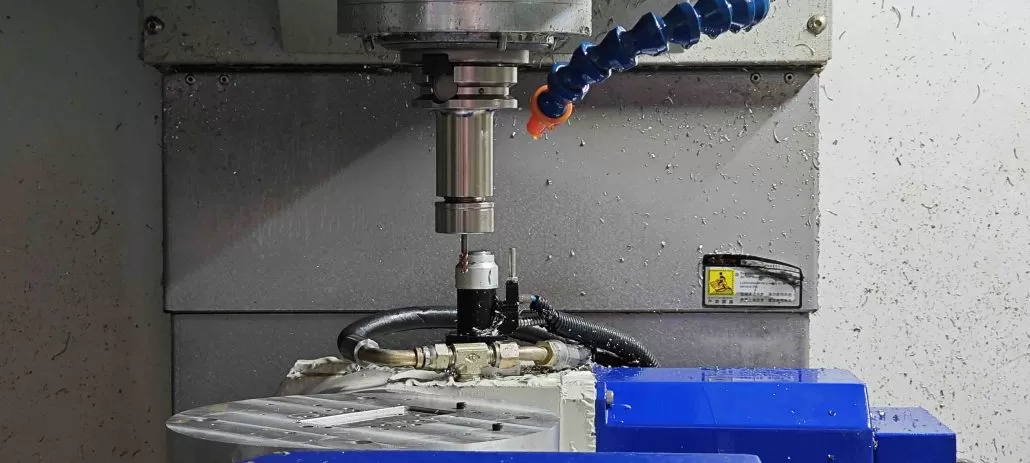
Digitization and Additive Manufacturing
Digitization has brought tremendous transformation to the manufacturing industry, and CNC machining is no exception. The ability to transfer digital designs directly to machines has revolutionized the production process. Additive manufacturing, also known as 3D printing, is a prime example of this. It allows the production of complex geometries, reduces waste and has the potential to change the way we design parts. As additive manufacturing technology continues to evolve, it is likely to become an integral part of the CNC parts production process.
CNC Parts on Demand
With the rise of on-demand manufacturing, CNC parts production has now become faster and more flexible than ever before. Companies can now access CNC machines remotely, and create, modify or customize parts in real-time. This has significant implications for supply chains, as it reduces lead times, eliminates inventory costs, and facilitates just-in-time production.
Rise of Autonomous CNC Machines
Robotics and automation are no longer confined to the assembly line but are now fast becoming a reality in CNC parts production. Autonomous CNC machines are now capable of self-loading, self-inspection, and even self-correcting. This increased automation means increased speed, efficiency, and accuracy, resulting in a quicker turnaround time and higher-quality parts.
Going Greener
The manufacturing industry is under constant pressure to reduce its carbon footprint, and this is where CNC parts production has an advantage. With CNC machines being precise and efficient, they generate less waste compared to traditional manufacturing processes. Additionally, renewable energy sources such as solar and wind power are increasingly being used to power CNC machines, making them a more sustainable choice for manufacturers.
As we have seen, the future of CNC parts is looking promising and exciting. From advancements in technology to rise of autonomous machines, CNC machining is likely to become even more efficient, faster and cost-effective. With this new era of CNC parts production, manufacturers can look forward to producing better-quality parts faster, allowing the industry to become more competitive in the global marketplace.


